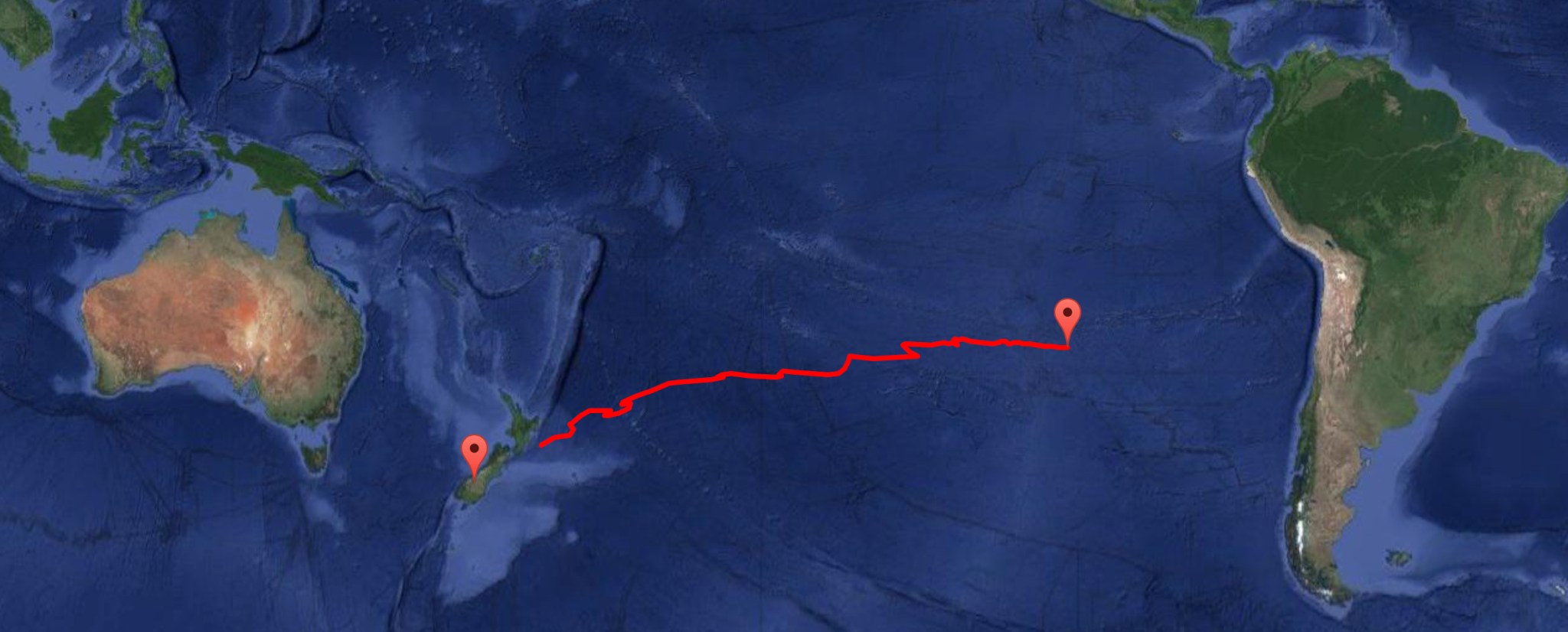NASA completed its third mid-latitude Super Pressure Balloon (SPB) flight at 11:24 p.m. EDT, Saturday, May 6, after 12 days, 4 hours and 34 minutes aloft.
Flight controllers at NASA’s Columbia Scientific Balloon Facility in Palestine, Texas, conducted a controlled flight termination of the balloon, which slowly descended back to Earth impacting in the South Pacific Ocean about 200 miles south of Easter Island.
Launching from Wanaka Airport, New Zealand, on a mission to test the SPB technology, a leak in the balloon was confirmed on its third day of flight. The balloon was designed to float at a stable altitude of about 33.2 km (109,000 feet) for long durations despite the heating and cooling of the day/night cycle. The balloon started experiencing significant altitude drops at night when the temperature dropped, regaining its predicted altitude during the day as the temperature rose.
Flight controllers dropped ballast to manage altitude loss during cold storms, which can see atmospheric temperatures at -50 degrees and below. In the 11th day of flight, the team was left with just 74 pounds of ballast and still 2,000 miles away from South America.
Facing a poor weather forecast that would lead to even lower altitudes with little ballast remaining, NASA preemptively ended the flight to ensure the greatest level of control and safety during descent.
“It’s unfortunate that our flight has come to an end at this point—our goal was at least two weeks and our hope was for many more weeks beyond that,” said Debbie Fairbrother, NASA’s Balloon Program Office chief. “We were able to collect a great amount of flight data, however, which we’ll analyze in the coming weeks and months to see if we can determine a cause for the leak. We’ll apply lessons learned to future flights as we continue to develop this technology.”
Flying on this year’s SPB test flight was the International Extreme Universe Space Observatory-SPB payload. EUSO-SPB is a high-energy cosmic ray particle astrophysics payload testing a fluorescence detector and its supporting technologies under the severe operating conditions of the stratosphere.
“The international EUSO Collaboration is deeply thankful for the support, expertise, and dedication of NASA to this historic opportunity to open a new window onto the universe,” said Angela V. Olinto, professor at the University of Chicago and principal investigator (PI) of the project. “Our flight was cut short, but we are confident that the super pressure balloon approach to observing the most energetic cosmic particles will pioneer a new understanding of these extreme phenomena.”
“EUSO-SPB performed well, and more than 60 GB of data was downloaded to ground,” said, Lawrence Wiencke, professor at the Colorado School of Mines and deputy PI for the EUSO-SPB flight. “We are looking forward to analyzing the data and to another super pressure balloon flight with NASA.”
NASA conducted a thorough environmental analysis of an open-ocean landing before beginning its mid-latitude SPB flight program in 2015. The open-ocean flight termination procedure makes use of the two-ton flight payload as an anchor to pull the entire balloon flight train to the bottom of the ocean as quickly as possible. In this way, the balloon does not remain in the primary water column zone where most marine species are known to live, minimizing environmental impacts.
NASA’s Wallops Flight Facility in Virginia manages the agency’s scientific balloon flight program with 10 to 15 flights each year from launch sites worldwide. Orbital ATK, which operates NASA’s Columbia Scientific Balloon Facility in Palestine, Texas, provides mission planning, engineering services and field operations for NASA’s scientific balloon program. The CSBF team has launched more than 1,700 scientific balloons in the over 35 years of operation.
For more information on NASA’s Balloon Program, visit: www.nasa.gov/scientificballoons.


































